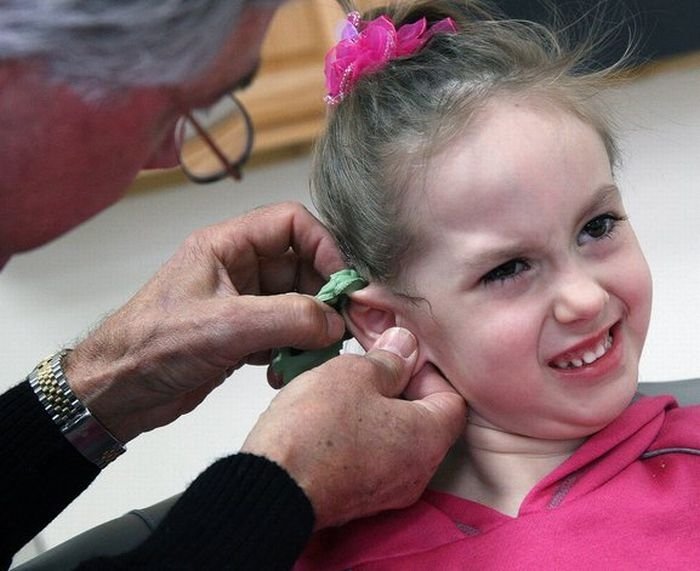|
|
Little Girl Gets New Ear And Cochlear Implant
|
In 1961 Dr William House (an otologist), John Doyle (a neurosurgeon) and James Doyle (an electrical engineer) commenced work on a single-channel device in Los Angeles. In one case a five-wire electrode was used but the same signal was applied to all contacts. House’s work continued in the 1970s in collaboration with engineer Jack Urban. Their implant was also a single-channel device but, in this case, the speech was modulated onto a carrier of 16 kHz. The device, manufactured by 3M, was ultimately implanted in some thousand or so recipients and paved the way for future clinical development of multichannel CIs. The House/3M unit was the first approved by the FDA (Food and Drug Administration of the USA) for implantation in adults in 1984.
In 1964, Blair Simmons at Stanford University implanted some recipients with a six-channel device. This device used a percutaneous plug to enable the electrodes to be individually stimulated. Recipients could still not understand speech through the device but, importantly, it demonstrated that by stimulating in different areas of the cochlea different pitch percepts could be produced.
In 1970, Robin Michelson, M.D. reported preliminary results of cochlear implantation in three deaf adults implanted with gold wire electrodes. Initially he teamed with Mel Bartz, an electrical engineer working with Storz, Inc. Michelson's report to the American Academy of Otolaryngology and Ophthalmology created a tempest. Orthodox auditory theory was in confusion at the time, and it was not thought possible for direct electrical stimulation of neural tissue to convey meaningful sound to the brain. Michelson conducted some work in San Francisco, in the Coleman Laboratory at the University of California, a foundation funded by the wealthy ENT department chairman at UCSF, Francis Sooy, MD. Michelson's implantation of humans before animal physiology experiments caused consternation among physiologists, audiologists, and many otologists who questioned his veracity and professional ethics, and the matter became a concern to the ENT department. An otolaryngology resident, C. Robert Pettit, heard Michelson results of his cochlear implantations at a department educational meeting. He ran to the Coleman Laboratory, where Michelson spent one half-day per week away from his Redwood City private ENT practice, and told the older surgeon of his dream since college of a multi-channel electrode resembling a hairbrush. Michelson said so many stimulus points were not necessary and that his patients were hearing "in stereo" with a two-channel electrode he had designed. Michelson and Pettit teamed to build the bipolar electrodes embedded in silastic which replaced the broken gold electrodes in Michelson's three patients. The reimplantation procedures were carried out in Redwood City Community Hospital, not at UC San Francisco, as were the original implants.
When Michelson reported initial results of the reimplantation, in 1971, another hue and outcry arose: He was accused of lying about results and of unethical human experimentation. Michelson could not bring his brainchild to the university setting yet. Pettit was incensed when he witnessed Michelson's humiliation at the meeting. He had assisted in the reimplantation surgeries and witnessed the fact that the patients, when tested on the operating room table, could hear something meaningful. He decided to document on film the results of testing on the reimplanted patients to prove to the scientific community that electrical stimulation could result in meaningful sound perception.
|
|









